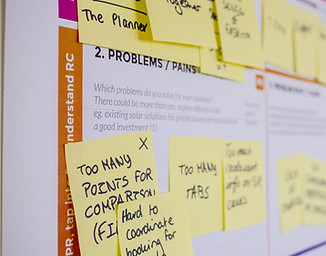Coco
Coco is a digital tool consisting of a series of mini-games that children with Asperger's syndrome can play to improve their mental health and elevate their general wellbeing.
This is the primary research project I worked on as a part of my Master’s thesis at Victoria University of Wellington. Throughout twelve months of working on Coco, I was able to discover the core problem of the target audience, research, create and test the prototype with clinicians. By leading the project with the help of the team, this research was published in February 2020 in the university.


Overview
Asperger's Syndrome (in Autism spectrum disorder or ASD) can be defined as an impairment that affects the communicative and social skills of a person. Lack of ability to recognise emotions lead to mental health conditions among children and adolescents with ASD. In addition, a small percentage of these children may develop more serious mental health conditions in their adulthood.

Goal
Creation of a digital tool designed to teach children about basic emotions through the experience of gamification
Opportunity
What if emotion recognition was taught to these children through gamification? Could that experience bridge the gap between frustration and learning by ultimately supporting their mental wellbeing?
In 2021, 1 in every 160 children were diagnosed with ASD around the world. The primary problem faced by these children is the inability to recognise basic emotions like anger, grief and/or joy. Research also shows 41.4% of children with ASD spend their free time playing video games.
Discovery and Explorations

Research
Psycho-social interventions can improve basic communication skills while providing the ability to recognise basic and complex emotions. It can also reduce frustrations in daily life for children with ASD and even for their caregivers.

Target Audience
Children with ASD are often left alone in the crown or are often excluded from social events. With the right therapy, it is possible to reintegrate them into society.

Expert interview
After interviewing clinicians, it was evident that the use of CBT techniques can help children recognize emotions. It was time that the prowess of mobile phones could be harnessed to help children living with ASD, giving them a better quality of life.

Guiding principles
There were about three guiding principles that were developed through available research, personas and user insight

Character development
To create an accurate representation of each emotion through characters, it was important to gain a deep understanding of the role of shapes, body language and use of colour. Example: Use of two compressed horizontal circles to represent fear (the tendency of humans to shrink their body and create a cocoon.)

Gamification
Research shows 41.4% of children with ASD spend their free time playing video games. Therefore the big idea was to combine cognitive behavioural therapy (CBT) with gamification to help children with ASD recognise basic and complex emotions with the help of mini-games.

Colour distinction
Evidence suggests that children with ASD have preferences in terms of colours. Based on this study, it was challenging to create a colour palette that would best suit children with ASD to make sure that no colour is sensory-overloading. Violet as the primary colour was used to create a sense of calm. Orange and shades of yellow were used to maintain focus and engagement without causing sensory overload.

Introducing Coco
Basic and complex emotions
The different levels identified were the need for a) recognition of basic emotions, b) recognition of more complex emotions, and c) understanding the reasons behind emotional responses. Coco acts as an emotion recognition tool that helps children recognise basic and complex emotions through gamification.


Introduction to breathing
Controlled breathing can help foster healthy mental wellness and reduce frustrations by bringing calmness. Developing a habit to concentrate on breathing can be challenging and does not come naturally. Therefore to introduce the importance of breathing, the popular box breathing technique was converted into an interactive game. This game was directed towards the children every time a level was unsuccessful.
Statistics for caregivers and therapists
Learning about behaviour patterns and understanding how mood affects the surrounding of the child is not easy. Coco tries to capture different moods and duration of gameplay to represent weekly reports and assessment of the wellbeing of the child in the form of graphs.

What I'd do differently
There were no further iterations made to this project due to the limited resources and timeframe. By the time the third dummy prototype was ready to be tested with the intended target group, I was at the end of my master’s programme. With more time on my hand, I would:
-
Validate my assumptions with the intended users
-
Consider personalisation options
-
Work on improving user flows
Team
Recognitions
Professors: Dana Fridman, Anne Niemetz
Clinicians & Advisors: Terry Fleming, Simon McCallum, Russell Pine
Engineer: Ayaz Allum
Nomination for UX Awards
Concept | 2021
Wellington International Students Excellence Award
Outstanding contribution in the field of creativity | 2019